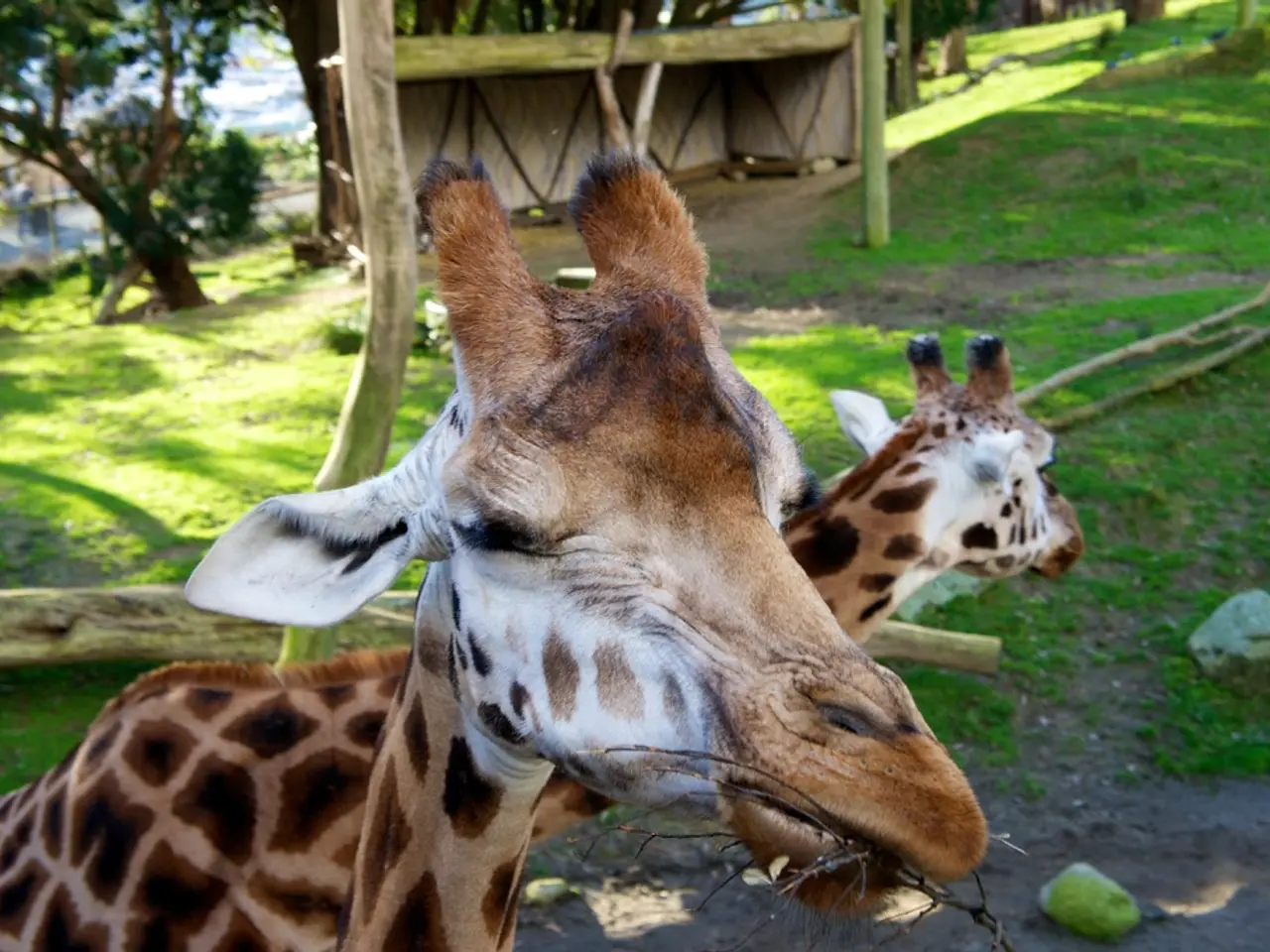Recognition of Four Distinct Giraffe Species Established in a Groundbreaking Assessment
In a groundbreaking assessment, the International Union for Conservation of Nature (IUCN) has officially recognized four distinct giraffe species. This taxonomic revision, described as "vital" by scientists, provides a globally standardized framework to inform conservation efforts.
The IUCN's recognition of these four species is crucial for accurate conservation action and coordinated management across national borders. The Reticulated, Masai, Southern, and Northern giraffes are now officially recognized as separate species.
The Masai giraffe, renowned for its distinctive pattern, has two subspecies: the Masai giraffe and the Luangwa/Thornicroft's giraffe. Similarly, the Southern giraffe has two subspecies: the South African giraffe and the Angolan giraffe. The Northern giraffe, on the other hand, has three subspecies: the West African giraffe, Kordofan giraffe, and Nubian giraffe.
The assessment concludes that these differences in species are not just skin deep. Notable differences in skull structure and bone shape were observed across regions, and the IUCN task force assessed genetic data to support the recognition of different giraffe species. The review found large differences in DNA between several giraffe lineages.
Historically, giraffes have been classified as a single species with nine subspecies. However, this new understanding of conservation threats and opportunities for giraffes suggests a more nuanced view. This nuanced understanding is expected to lead to a more effective approach to conservation planning for these majestic creatures.
The IUCN Red List of Threatened Species was used to assess the conservation status of giraffes. Unfortunately, the assessment revealed that giraffes are assessed as "vulnerable" to extinction. Several of the existing subspecies are classified as endangered or even critically endangered.
This urgent need for better conservation planning is underscored by the fact that natural features such as major rivers, rift valleys, and desert areas in Africa may have cut off giraffe populations from each other, leading to their evolution into different species.
The IUCN giraffe and okapi specialist group's assessment reflects the best available science. The review results do not provide information about the identity of the authors of the IUCN investigation on giraffe classification. However, the IUCN Red List assessments will benefit from this taxonomic revision, ensuring a more accurate and coordinated approach to giraffe conservation.
Read also:
- Peptide YY (PYY): Exploring its Role in Appetite Suppression, Intestinal Health, and Cognitive Links
- Toddler Health: Rotavirus Signs, Origins, and Potential Complications
- Digestive issues and heart discomfort: Root causes and associated health conditions
- House Infernos: Deadly Hazards Surpassing the Flames








